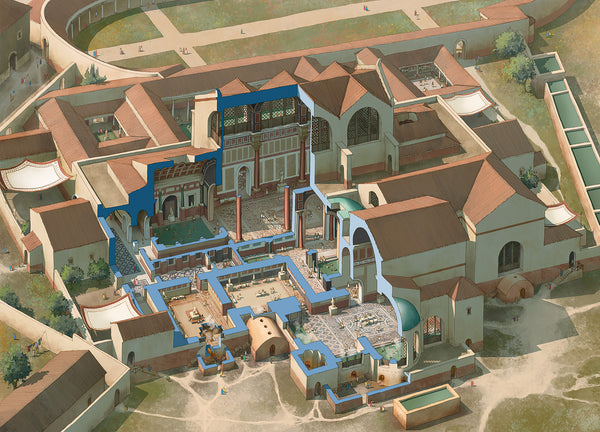King Arthur’s first battles
The History of the Kings of Britain is one of the most famous pieces of literature from the Middle Ages. Much of it is devoted to the story of King Arthur, chronicling his various battles and campaigns in England and beyond.
This pseudohistorical account was said to be written around 1136 by Geoffrey of Monmouth, but the recent publication of a new edition and translation of the work suggests that the original author was an archdeacon named Walter of Oxford. His name appears in the so-called First Variant version, a shorter Latin version of The History, which has only survived in a handful of manuscripts from the Middle Ages.
In the First Variant version Arthur’s reign begins in Book 9 of The History of the Kings of Britain. Although he was only 15 years old when he became king, the author notes that he was “a youth of great strength and boldness and generosity; for that reason he was welcomed and accepted by the people and the leaders of the entire kingdom.”
His first actions after becoming king was to attack the Saxons, for they were the people who killed his father Uther - by poisoning him - and he begins to assemble an army to go to York. The Saxons are led by a man named Colgrin, who is also bringing together an army of his people along with the Scots and Picts. The two forces meet next to the River Dulgas, ending with King Arthur and the Britons victorious. Colgrin flees to York, with the Britons chasing after.
The siege of York has only just begun before a new player enters the scene - Colgrin’s brother Baldulf, who commands an army of 6,000 men. He hides his army in a forest near York, intending to make a nighttime attack on the besiegers. However:
... Arthur was forewarned by his advance men that the Saxons were hidden in the forest, and Cador, Duke of Cornwall, was sent with six hundred knights and three thousand foot soldiers, and coming upon the enemy that night they killed the greater part of them and drove Baldulf into flight.
The story continues with Baldulf dressing up as a jester and walking through Arthur’s camp. Not being suspected by the Britons he is able make his way to the walls of the city and then slips in to join his brother. The siege continues, but then word arrives that England has been invaded by Cheldric, Duke of the Germans - Arthur must abandon the siege to deal with the new threat.
 Arthur goes to London, where he plans his next move. It is decided that he makes an alliance with the Britons of Armorican region, ruled by King Hoel, who is also Arthur’s nephew. The alliance is apparently quickly made, for in the next sentence Hoel arrives with 15,000 men at the port of Southampton. The History of the Kings of Britain continues:
Arthur goes to London, where he plans his next move. It is decided that he makes an alliance with the Britons of Armorican region, ruled by King Hoel, who is also Arthur’s nephew. The alliance is apparently quickly made, for in the next sentence Hoel arrives with 15,000 men at the port of Southampton. The History of the Kings of Britain continues:
After he was honourably received by King Arthur, as was fitting, they promptly went to the town of Kaerliudcoit, called Lincoln in our language, which was besieged by the enemy. As soon as they arrived, a battle was fought outside the town, in which a slaughter of the Saxons was made the likes of which has not been witnessed before or since. Some fell slain by arms, others drowned in the river while fleeing, and the remnant all fled together from the siege. The Britons did not cease to pursue them until they came to the wood of Colidon. There, coming back together from their flight in all directions and reassembling their cohorts, they sheltered in the wood and tried to make a stand against the Britons. But the Britons encircled them and cutting down part of the forest, prevented their escape in that direction.
The siege of the Germans lasts three days, after which a deal was made: the invaders would be allowed to return to their ships and leave England, but they had to leave all their weapons and goods behind. They also agreed to give hostages to Arthur and send tribute every year.
Thus Arthur’s first war ends in victory, although it was short lived, as the Germans soon return to restart the fight. As a piece of literature, this account of Arthur’s early deeds moves very quickly spanning just a few paragraphs. No words are spoken by the King or anyone else in this section, and the details about the fighting are very sparse. It reads very much like a historical chronicle, not the elaborate Arthurian tales that would develop later in the twelfth century.
The History of the Kings of Britain: The First Variant Version, has been edited and translated by David W. Burchmore and is published as part of the Dumbarton Oaks Medieval Library. Click here to learn more.
To learn more about the wars and warfare of the literary Arthur, check out issue X:1 of Medieval Warfare.



1 comment
It is very useful, it just needs more info about each thing.